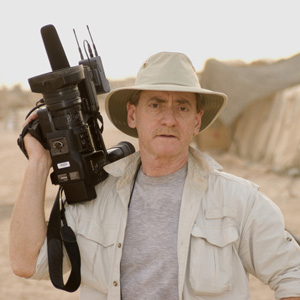 |
| Bill Gentile |
Bill Gentile is running the workshop. Here is his website.
There are six people in the workshop, including a woman named Zar from Afghanistan and a gentleman named Jerry who flew in from Western Africa!
Let's get started.
When filming:
50% should be close-ups or extra close-ups
25% medium shots
25% wide or extra-wide shots
What makes a good character? Three tests:
- Take your camera and walk around with your camera down. Wait for someone to come to you who wants to talk to you. These people will open up to you and be willing to talk. People who want to be characters.
- They must have compelling stories to tell.
- Can they tell the story? Are they articulate?
If we learn how to DECONSTRUCT a story, we will know how to CONSTRUCT it.
Story - How do we get there?
- Individual clips. (Words)
- Then we build sequences. (J and L edits, etc...) (Sentences)
- Then you build scenes. (Paragraphs)
Shoot at least 20 seconds for each clip.
- Make pictures that MOVE. Find places where you can have cutting points. (If focusing on someone writing (close up) and they reach up and touch their nose, that is a cutting point.)
Don't use LCD screen. Hard to see in light. Sucks up battery. You can't get a good sense of what is going on. Can have a conversation with someone. Should look
Connect the subject to the audience and the audience to the subject.
Learn to use your body as a tripod. Left hand should be support for the camera. You can distribute your weight down to your hip. Left elbow should be down toward your hip, knees slightly bent.
Shoot at eye level.
Learn to use your body as a tripod. Left hand should be support for the camera. You can distribute your weight down to your hip. Left elbow should be down toward your hip, knees slightly bent.
Shoot at eye level.
Clip alphabet:
- Extra close-ups. (Close-up of an eye)
- Close-up (Close up of face) (Can take off some of the hair, but don't take the chin off. Want to be able to have a lower-third)
- Medium shot (Top of head to the belt)
- Wide shot (Head to toe)
- Extra wide shot
- Tracking shot (Following someone. Cameraman does not move)
- Pan shot (Stitching together information. Person-to-person)
- Tilt (Up and Down)
- Zoom
- Point of view (If you shoot someone walking over brush, then you walk over the brush so you can see what the character is seeing.)
- Over the shoulder (Ties the character together with what they are doing or connecting two characters together)
Start with establishing shots or master shots.
Then start shooting visually interesting/defining things around the room.
Then start shooting visually interesting/defining things around the room.
Then start shooting characters (The Six Shot System)
The best stories are about CONVERSATION.
Six Shot System:
The best stories are about CONVERSATION.
Six Shot System:
- Close-up of hands.
- Close-up of face.
- Medium shot to put together face and hands.
- Wide shot (head to toe) (Gives more context of what is going on)
- Over the shoulder (Tight)
- Extra-wide shot to put the subject in context
Informal interviews. (Magic questions):
- What are you doing? (Present)
- What did you just do? (Past)
- What are you going to do? (Future)
ALWAYS shoot with headphones on.
Controlling idea: "My documentary shows ________________________." If you can't answer it, it isn't a story.
Script - Should be able to hand the script to an editor with the footage and he should be able to edit it together.
Controlling idea: "My documentary shows ________________________." If you can't answer it, it isn't a story.
Script - Should be able to hand the script to an editor with the footage and he should be able to edit it together.
Thanks for downloading this informative content to your awesome blog! Now I have a place to start the next time our gym has an event.
ReplyDelete